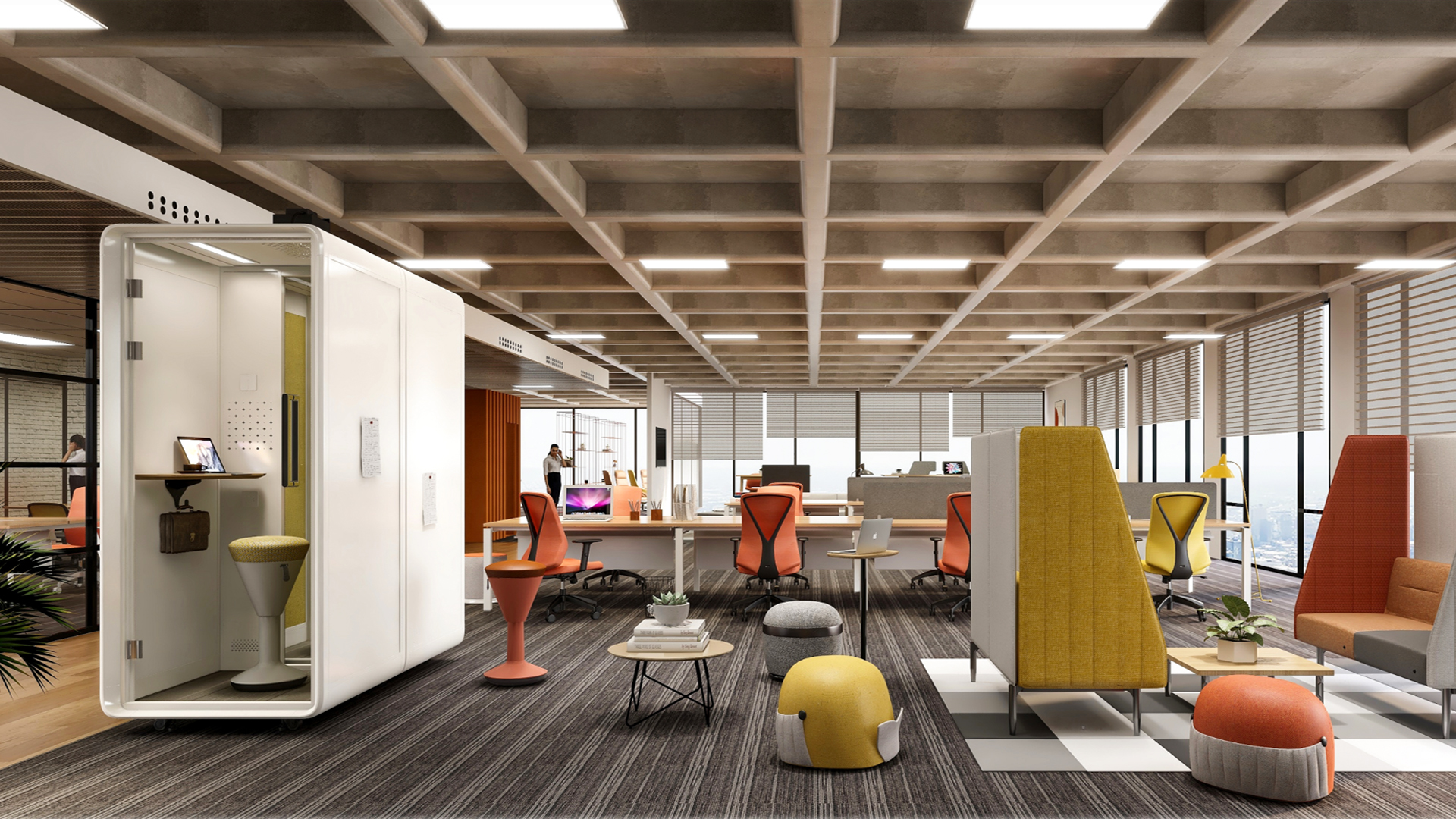-
We encounter distraction after distraction at work every day. People frequently arrive at work early, remain late, or go on the lookout for a quiet area. Employees may need more time to think and solve problems as a result of information overload and hyper-connectivity. Because of the near-constant interruptions we experience at work, we frequently lose our capacity to be creative or original, which is bad for the company. That is why Focus rooms are among the top five workplace perks, given the popularity of open office layouts. According to experts, the unit count of smaller private spaces in office design will expand at the most significant rate shortly.
Focus spaces offer a place where workers may settle down and unwind or work in a more private atmosphere. Focus rooms give employees a place to conduct private video conversations, and as we are all aware, the number of video calls we make throughout a workday has substantially increased. Focus rooms have taken on a variety of forms in modern office design. How can an office be designed to promote intensely concentrated and fruitful deep work without compromising the advantages of an open office setting? In this article, we’ll examine how and why a focus area matter in the office.
-
Finding the right balance
Finding practical ways to allow employees to freely alter their environment so they may use particular areas for particular jobs is the constant objective of an optimal workplace.
Collaboration is excellent, but productive workplaces can’t be built around a top-notch café and a posh co-working facility. According to research, effective cooperation involves both teamwork and individual focus. To maintain that balance and increase office productivity, workspaces should be built to support both work styles. This is why incorporating dedicated focus spaces is essential.
Deep concentration work is the capacity to work on a particular job or project for four or more unbroken hours each day. Innovative solutions cannot be created, designed, or produced until the necessary mental space is available. Some people can do some individual work, such as responding to emails in common or communal locations. But, the majority of workers need access to more private places than an open-plan workstation for professional tasks that demand deep concentration, writing, coding, or analytics. Traditional concentration work environments emphasize controlling external visual and aural distractions. How might these areas encourage concentration and cooperation? By creating a comprehensive design strategy.
-
Creating Spaces for Focused Work in the Modern Office
How can a modern office be designed to foster deep concentration and productivity without sacrificing the benefits of an open workspace? As the boundaries between collaboration and focus blur, the best offices today strike a balance through intentional design. Here are three effective strategies for creating modern work environments that empower employees to think deeply, create freely, and perform at their best.
1. Acoustically Engineered Pods or Phone Booths
In modern offices, acoustic privacy is essential. Soundproof phone booths or focus pods have become a popular solution to minimize noise distractions. These private spaces allow employees to make client calls, join video meetings, or work quietly on demanding tasks. Two- or three-person pods can also serve as mini collaboration rooms—perfect for small teams needing an isolated area to brainstorm or concentrate on specific projects. By integrating these pods into open-plan layouts, companies can maintain a sense of openness while providing pockets of peace.
2. Alternate Workspaces for Concentrated Tasks
Flexibility is the hallmark of the modern office. Employees perform best when they can choose where and how they work. Providing access to quiet zones or enclosed focus rooms encourages autonomy and improves performance. These on-demand workspaces provide acoustic separation and visual cues that signal “do not disturb,” promoting deeper concentration without completely removing workers from the collaborative environment. A modern office thrives when it strikes a balance between focus and flow.
3. The Library as a Quiet Zone
Inspired by traditional libraries, modern office design often includes a designated “quiet zone.” Unlike social lounges, office libraries are minimalist—featuring community tables, lounge seating, and an unspoken understanding: silence is golden. This area invites mindfulness, reflection, and uninterrupted focus. It serves as a mental reset zone where employees can recharge and return to their tasks with renewed clarity and creativity.
-
Conclusion
Everybody will have a different preferred focal space. Employees need options so they may pick a workspace that fits their work preferences and enables independent attention and concentration. Designers must concentrate (in-depth) on what truly matters: how their work will affect people and processes. As a result, we must go beyond open and closed to comprehend the fundamental heart of an organization’s identity, its basic values, and the preferences and habits of the workforce.
-
Products
 Desks + Workstations
Desks + Workstations StoragePanel + Space Division
StoragePanel + Space Division Accessories
Accessories - Space
- Inspiration
- Sustainability
- Resource
- About Us
-
Products
 Desks + Workstations
Desks + Workstations StoragePanel + Space Division
StoragePanel + Space Division Accessories
Accessories - Space
- Inspiration
- Sustainability
- Resource
- About Us
- Showrooms
- Dealer Login
- Contact













